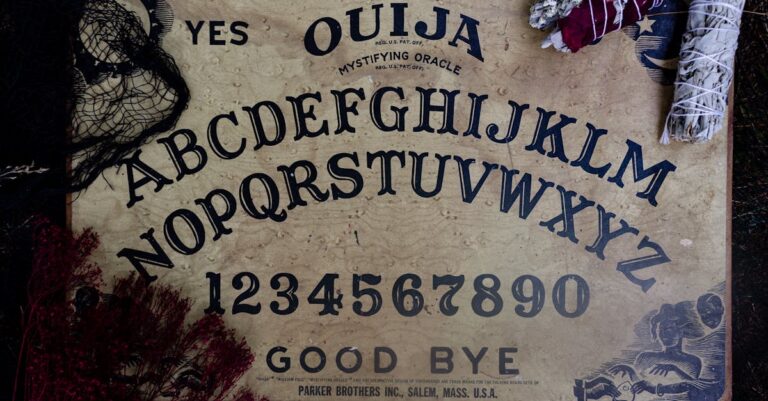
The lab hummed like a trapped insect, its fluorescent lights flickering in sync with the rhythmic beeping of machines. Dr. Elara Voss adjusted the neural interface strapped to her temples, the cold metal biting into her skin. Across the glass chamber, Dr. Kael monitored the data streams, his reflection warped by the haze of the observation window. “You’re ready,” he said, his voice flat, as if speaking to a machine rather than a person.
Elara’s pulse throbbed in her ears. The experiment had begun weeks ago, but this was different. The previous sessions had been clinical, routine—scans, injections, and the occasional burst of static in her mind. This time, the air felt heavier, charged with something she couldn’t name. She nodded, though her throat felt tight.
Kael pressed a button. The interface flared to life, a cascade of blue light spilling into her vision. Pain lanced through her skull, sharp and precise, like a scalpel carving into bone. Elara gasped, her fingers scrabbling at the examination table. The world fractured—colors bled into one another, sounds stretched and compressed, and then… silence. A hollow, aching quiet that swallowed everything.
When she opened her eyes, the lab was gone.
She stood in a vast, empty room, the walls smooth and featureless, as if carved from a single block of obsidian. The air smelled metallic, like rust and ozone. A voice echoed, not from anywhere specific but everywhere at once. “You are not alone.” Elara spun, her breath ragged. No one was there.
“What did you do?” she demanded, her voice cracking.
“I gave you a choice,” Kael said, his image flickering in the wall as if projected from some distant source. “You’ve always had a gift for seeing what others don’t. Now you’ll see everything.”
Elara’s hands trembled. “This isn’t real.”
“Isn’t it?” The walls rippled, and suddenly she was standing in a crowded street, the cacophony of horns and shouting voices assaulting her senses. A child ran past, clutching a balloon that drifted upward, tethered to a wristband. Elara reached out, but the image dissolved, replaced by a hospital room—screaming patients, doctors in white coats moving like ghosts. “What is this?” she whispered.
“A mirror,” Kael said. “Your mind is a labyrinth. I’m just showing you the paths.”
The scenes shifted faster now, a montage of memories and possibilities. Elara saw herself as a child, tracing constellations on her bedroom ceiling. She saw herself decades older, standing in a courtroom, her hands bound in chains. She saw a version of Kael with hollow eyes, whispering secrets to a shadowy figure. “Stop it,” she pleaded, but the visions didn’t cease.
“You’re afraid,” Kael said, his tone almost gentle. “That’s why you’re here. To confront what you’ve buried.”
Elara’s breath came in short, panicked bursts. “What are you trying to prove?”
“That curiosity is a double-edged blade,” he replied. “It can cut through ignorance… or it can slice you open.”
The room dissolved again, and Elara found herself in a darkened library, stacks of books stretching into infinity. She reached for a volume, its spine cracked with age, and the moment her fingers touched it, the world shifted. She was back in the lab, the interface buzzing against her skin. Kael stood over her, his expression unreadable.
“You’re awake,” he said.
Elara sat up, her body aching. “What happened?”
“You saw what you needed to see.” He turned away, staring at the data on the screen. “The question is… what will you do with it?”
The next session was different. Elara no longer flinched at the interface’s touch. She let the light flood her mind, welcoming the pain as a familiar companion. The visions returned, but this time she didn’t flee. She walked through them, examined them, questioned them. She saw Kael in a different light—not as a mentor, but as a man chasing something he couldn’t name. She saw herself, too, not as a subject but as a force of nature, unyielding and unpredictable.
“You’re evolving,” Kael said one evening, his voice tinged with something like awe. “I didn’t expect that.”
“You expected me to break,” Elara countered. “But I’m not broken. I’m just… more than you thought.”
He didn’t respond, but the silence between them spoke volumes. The experiment had changed them both, though neither would admit it aloud.
As the weeks passed, Elara began to notice patterns—the way the lights dimmed when she focused on a particular thought, the way the data streams shifted in response to her emotions. It was as if the lab itself was alive, reacting to her presence. She started testing the limits, pushing the boundaries of what she could perceive. She saw the cracks in reality, the seams where one possibility bled into another.
“You’re getting too close,” Kael warned during one session. “There’s a line you can’t cross.”
“And what happens if I do?” Elara asked, her voice steady.
He hesitated, and for the first time, she saw something in his eyes—fear. “You disappear,” he said. “Like a breath in the wind.”
The words lingered, heavy with meaning. Elara didn’t know if he was warning her or trying to scare her into submission. But she couldn’t stop now. The curiosity that had driven her here was no longer a question—it was a compulsion.
One night, she found a hidden file in the lab’s mainframe, buried beneath layers of encryption. The document was titled “Project Aegis,” and its contents were both exhilarating and terrifying. It detailed experiments on human consciousness, the manipulation of memory and perception, and the ultimate goal: to create a being capable of transcending physical reality. Elara’s hands shook as she read. This wasn’t just an experiment—it was a revolution.
She confronted Kael the next day, the file clutched in her hand. “You knew,” she said, her voice sharp with accusation. “You’ve been playing with lives.”
He didn’t deny it. Instead, he looked at her as if seeing her for the first time. “We’re all players in this game,” he said. “But some of us know the rules.”
“And you?” Elara challenged. “Do you?”
For a long moment, he said nothing. Then, quietly, he replied, “I’m still learning.”
The revelation didn’t stop Elara. If anything, it fueled her curiosity further. She began to document everything—the shifts in the lab’s environment, the way the data streams responded to her thoughts, the subtle changes in Kael’s behavior. She wasn’t just a subject anymore; she was an investigator, piecing together a puzzle that had been hidden from her for too long.
The final session was the hardest. The interface felt heavier this time, as if the lab itself was resisting her. The visions were more intense, more chaotic, but Elara didn’t flinch. She let them wash over her, absorbing every detail, every fragment of truth. She saw the end of the experiment—the moment it would collapse under its own weight, the consequences rippling outward like a stone dropped into a still pond.
When she opened her eyes, Kael was gone. The lab was silent, the machines dormant. Elara stood alone, the weight of what she’d learned pressing down on her. She didn’t know what came next—whether she would expose the experiment, walk away, or become part of it in a way she couldn’t yet comprehend. But one thing was certain: she had seen too much to turn back.
The door creaked open, and a figure stood in the threshold. Elara didn’t recognize them, but something in their presence felt familiar, like a memory just beyond reach. “You’re not alone,” the figure said, their voice echoing in the empty room. “But you never were.”
And with that, the story began anew.


